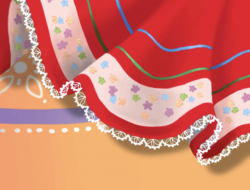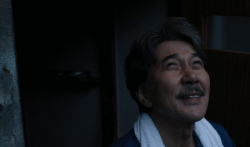The exhibition, Goya: Images of Women, is an outstanding show at once witty, sensual and highly thoughtful. Displayed first in Spain, the exhibition comes to the National Gallery from Madrid’s premier art museum, El Prado.
You might only recall Goya (Francisco Goya y Lucientes) from his celebrated paintings, two of the most stunning in the exhibition?the Maja Desnuda (Naked Maja) and the Maja Vestida (Clothed Maja). The Maja Desnuda is highly allusive to earlier works such as the Giorgione’s Sleeping Venus and Titian’s Venus of Urbino, but is more overtly erotic than either. The reclining Maja is “naked,” rather than the more demure “nude.” The central focus of the work is on her sexuality as she stares unabashedly outward at the viewer. Even her posture is provocative; it seems as though she tilts toward the viewer and might tumble from the canvas at any moment. This sort of engaging sexuality was shocking for the time, but even by today’s standards, it is strikingly erotic. This painting was probably the inspiration for the infamous drawing scene in the movie Titanic. The Maja’s clothed counterpart was painted later and, although clothed, retains the original tone of seduction. These works are grouped into the section of the exhibition entitled “Gentlemen’s Paintings,” due to their erotic nature and content, which at that time would have been completely inappropriate for a female audience.
Goya was, however, a prolific artist, and this exhibition spotlights a different and rather eclectic assortment of his works, the first exhibit of its kind to contemplate his portrayal of women. The subject of the female form is a remarkable focal point for a show on Goya, whose works are often critical, sometimes censuring or even mocking of women.
The exhibit is organized chronologically and therefore begins with some early works, known as tapestry cartoons, which Goya produced for Spain’s royal tapestry factory. Tapestry cartoons were not actually intended for display but instead to serve as a model for the tapestry makers. These paintings spent years rolled up in storage before they were recognized for their own merit. Some are displayed alongside their end products (the tapestries themselves). From the tapestry cartoons, we can see one of Goya’s greatest talents: social commentary. The content of the tapestry cartoons seems at first to be mild and innocuous, but it is not without sardonic and sexual undertones. The Parasol shows a middle class woman in a romantic encounter, attempting to belie her own social position and affecting nobility. The Majas were one of Goya’s recurring subjects, working class women who would dance freely and uninhibited in the streets during a festival on the first of May. The Majas first appear in a cartoon called A Walk in Andalusia. The Swing, which alludes to Jean-Honore Fragonard’s erotic scene of the same title, is a rhythmic interplay of innocence and sexual tension.
Goya soon grew frustrated with the task of painting cartoons, which were never displayed in public, but his fame had grown enough for him to make the transition to commissioned royal portraits. The reputation of portrait painting, especially royal portrait painting, to the modern viewer is often one of dull, tedious and largely undistinguishable paintings. Goya’s take on his royal subjects, however, is one of the more appealing characteristics of his work.
In one of the first portraits in the show, the Infanta Don Luis, Goya depicts the family of the younger brother of the future king of Spain, who had lost the royal Bourbon name because Don Luis married a beautiful but common woman. Goya himself appears in the painting, a testament to his own pride, as well as the brooding figure of another artist who failed to receive the commission for the work.
Goya demonstrates his genius for communicative facial expression and subtle mockery in the several other paintings. The Marchioness of Villafranca Painting Her Husband shows the noblewoman as though she were painting a portrait of her husband, but ironically, she seems far more absorbed in herself than in her subject.
Other smaller paintings and aquatint prints reveal Goya’s tendency to moralize. One such work is the amusing scene of the Duchess of Alba, purportedly Goya’s mistress, and some younger family members teasing their fanatically religious cousin, who stands in a shadow symbolic of religious mystery. The figures of the children, by contrast, stand in the position of enlightenment. This painting is followed by a series of noncommissioned pieces that allowed Goya to experiment with themes that he found personally appealing. They depict the ravages of war, by which Spain had been torn during Goya’s lifetime, first with England and then with France. There are also many small works illustrating the theme of human folly, especially the lack of enlightenment that he believed (typically for his time) was manifest in the souls of women. He portrays women in the least complimentary light, as witches, bad mothers and prostitutes, and criticizes them for stereotypically “female” faults such as over-sentimentality and lack of education, enlightenment and rationality.
Ironically for an exhibit that showcases women, Goya is quite critical of them on the whole. His genius is contained in technique and execution, and typical of his generation, it does not extend to open-mindedness. Goya’s works in Images of Women may be artistically innovative, but they are in no way socially progressive. This fact, however, does not ruin the effectiveness of the overall show.
Goya: Images of Women will be at the National Gallery, located at 6th Street and Constitution Avenue, N.W., until June 2.




